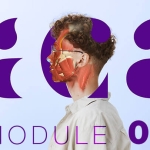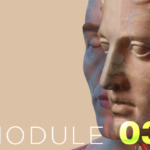Module 02 | second edition
COURSE OF DISSECTION ANATOMY:
BASIC AND ADVANCED TECHNIQUES IN IMPLANT DENTISTRY

Module 02 | second edition
The course deals with the application of the main techniques of basic oral, regenerative and implant surgery, with associated dissection on cadaver of the related muscle and neurovascular tissues.
Starting from the elevation of full-thickness and partial-thickness flaps, the described surgical techniques will be performed first, followed by dissection of the tissues surrounding the surgical area.
The dissection taught will be a “clinically oriented” dissection by planes, that is to say structured with the objective of understanding, through the acquisition of the anatomical data, how to prevent and manage haemorrhage and neurosensorial complications, intra- and post-operatively respectively.
This approach is essential to dispel doubts and fears during the application of the techniques, while improving your clinical skills.
The course is conducted on anatomical preparations of fresh-frozen cadavers that ensure maximum safety for the participants from the point of view of infections and provide an ideal superimposability to the living person.
85% of the course will be focused on practice, the keyword will be “do” and the more theoretical aspects will be combined with hands-on demonstrations.
One head for every 2 participants will be made available to give everybody the opportunity to take part directly.
Installment plan and financing
Get in touch with our secretariat to have all information concerning access to installment and financing conditions.
+39 031 2759092 · info@craniofacial-academy.com
Deductibility of the expenses
“More training, fewer expenses”
For health professionals (and not only for them), training expenses are fully deductible. Starting from 15 August 2017, the Consolidated Act on Income Tax has been modified through the addition of a paragraph according to which registration fees for master’s degree courses, training courses, professional refresher courses, conferences, conventions and travel expenses are fully deductible within 10,000 euros for private practitioners. This important change, therefore, will allow also dental professionals to cope more easily with the costs of their own training, thus lessening the burden of expenses. Complete information: Art. 54 Determination of self-employment income.
2 days’ training
25/11/2024 – 8.30 a.m. – 6.30 p.m.
26/11/2024 – 8:30 a.m. – 6:30 p.m.
Lunch with catering service inside Trecchi Palace and Coffee break included.
Theoretical teaching part with explanatory dissection and clinical videos
1. Anatomy of the mandible and of muscular and neurovascular structures in relation to the treated surgical techniques.
2. Overview of the surgical techniques to be performed.
Hands-on cadaver with application of surgical techniques in the mandibular area and dissection of the relative muscular and neurovascular structures of major interest
Surgical Techniques 1° stage:
Surgical Techniques 2° stage:
Surgical Techniques 1° stage:
Surgical Techniques 2° stage:
| 1 | Learn to perform the basic oral, regenerative and implant surgery techniques described. |
| 2 | Learn to identify the bone, neurovascular and muscle tissues of greatest clinical interest in the maxillo-mandibular complex. |
| 3 | Learn how to dissect by planes the tissues surrounding the surgical area. |
| 4 | Learn flap passivation techniques through deep periosteal as well as surface and muscle releases. |
| 5 | Learn how to prevent and manage surgical complications of anatomic origin. |
This content, together with the other modules, is included in the ACA path, the Academy of cranio-facial anatomy, to learn, practice and learn while dissecting.
Choose the module that best suits your needs and start learning through the direct application of surgical techniques, followed by diversified modules based on the level and the clinical needs of each participant.
Study the anatomy of the oro-maxillofacial region both intra- and extraorally and expand on the knowledge of those anatomical variables most strongly associated with intra- and postoperative complications discussed within the international scientific literature, through an evidence-based- scientifically oriented teaching methodology.
Do not lag behind, take part in your future with us.
Choose the module that best suits your needs and start learning through the direct application of surgical techniques, followed by diversified modules based on the level and the clinical needs of each participant.
Study the anatomy of the oro-maxillofacial region both intra- and extraorally and expand on the knowledge of those anatomical variables most strongly associated with intra- and postoperative complications discussed within the international scientific literature, through an evidence-based- scientifically oriented teaching methodology.
Do not lag behind, take part in your future with us.
dentists
surgeons
students
If you enrol on the courses of the Academy of Craniofacial Anatomy you can:
What is the Academy of Craniofacial Anatomy?
The Academy of Craniofacial Anatomy was established in May 2021 and, as a cultural association, aims at promoting the study and scientific research of the anatomy of facial massif through constant training in cadaver dissection, proposed by anatomists and surgeons with a considerable experience in the field of dissection of the craniofacial region, and scientific contributions in the form of online and paper publications together with online courses.
Who are you?
The Academy prides itself of an international teaching staff of anatomists and clinicians with a considerable experience in the field of anatomical dissection, and boasts a strong partnership with the professors of the Department of cranio-cervico-facial anatomy at Université René Descartes Paris 5, a historical reference center for anatomic dissection in Europe, and one of the most prestigious in the world.
We are honored to have as our honorary president Prof. Jean-François Gaudy, Full Professor of Anatomy at the Faculty of Medicine and Surgery of the Université René Descartes Paris 5, Paris.
Your mission?
The purpose of the Academy is to offer a ONE-OF-A KIND training with an approach that must be first as an anatomist and then as a clinician; for this reason dissection anatomy courses are given first, followed by courses on the application of the surgical techniques, with diversified modules based on the level and the clinical needs of each participant.
Where can I follow your courses?
The courses will take place at an exclusive venue, i.e. at the Cadaver Lab of Trecchi Palace, a historical mansion of inestimable artistic and cultural value, built in 1496, situated in the historic centre of the city of Cremona.
What is the motto of your academy?
The motto of our academy is “we see ONLY what we know” and this really means that if we do not know an anatomic structure in detail, it will certainly be unlikely for us to prevent and manage the related complications.
Thanks to anatomical dissection, the muscular and neurovascular tissues of interest and their anatomical variability can be seen with own eyes, and this aspect is fundamental for the growth of a surgeon in order to learn how to manage and above all to prevent haemorrhage and neurosensorial complications.
What is meant by anatomical dissection?
The terms “anatomical dissection and “autopsy” should not be confused, they are not the same: while autopsy is performed by a pathologist in order to ascertain the cause/s of death, and therefore it is not necessarily conservative, anatomical dissection is a highly conservative practice performed by an anatomist and is based on the separation of the different planes and the visualization of three-dimensional relationships among individual structures.
In spite of the innovative, radiological examination and the continuous evolution of surgical techniques, the study of dissection anatomy remains central; surgeons believe that the direct experience on cadavers is irreplaceable and that anatomical dissection takes on a fundamental importance in the training of graduate students and updating of specialistis.
Why is anatomical dissection so important?
Anatomical dissection is the main teaching and learning instrument to get to know human body through direct experience, and it distinguishes itself from autopsy and surgical practice.
It was also defined by Dyer & Thorndike (2000) as “the universally recognized passage to become a physician.”
Indeed, only through training on cadavers, anatomy, from a mnemonic subject of study in books, becomes a true mirror of reality, allowing the clinician to acquire the sense of tissue consistency, to directly identify the most complex anatomical details and to learn the three-dimensional relationships of vessels, nerves and organs in the different parts of the body.
Is an anatomical preparation planned for each learner?
One head for every 2 participants will be made available to give everybody the opportunity to take part directly.
The participants themselves will perform the dissection of the anatomical structures and will apply the described surgical techniques directly on the cadaver, using the instruments and materials made available.
What percentage of the ACA courses will be devoted to practice?
80% of the courses are focused on practice, the keyword will be “do” and the more theoretical aspects will often be accompanied by hands-on demonstrations.
What type of certificate do the participants receive?
Everyone attending the courses will receive a certificate of participation in the training program of the Academy and for each module the relevant CME credits provided by the Ministry of Health will be issued.
How much do courses cost?
Our courses have variable costs; you can consult the page of each module to have information on costs.
Can I pay in installments or obtain financing for the participation fee?
Definitely! Our office staff will provide all the information concerning access to installment and financing conditions.

 Dissection anatomy for facial aesthetics: Cadaver practical course and live...
Dissection anatomy for facial aesthetics: Cadaver practical course and live...